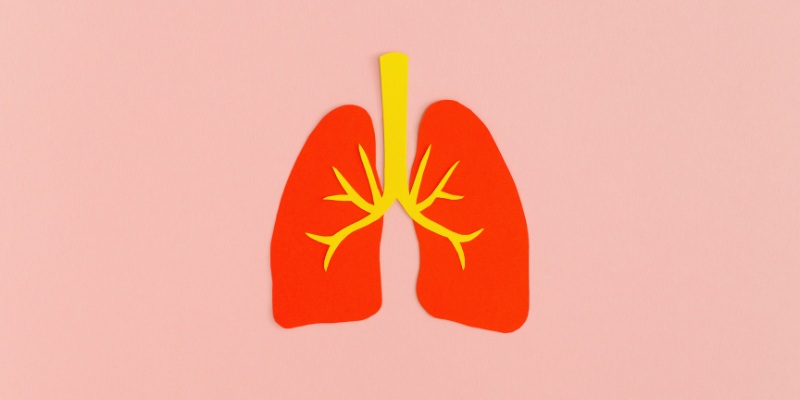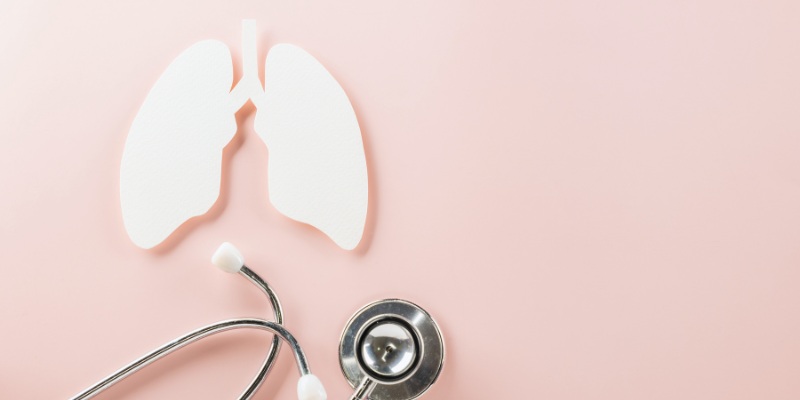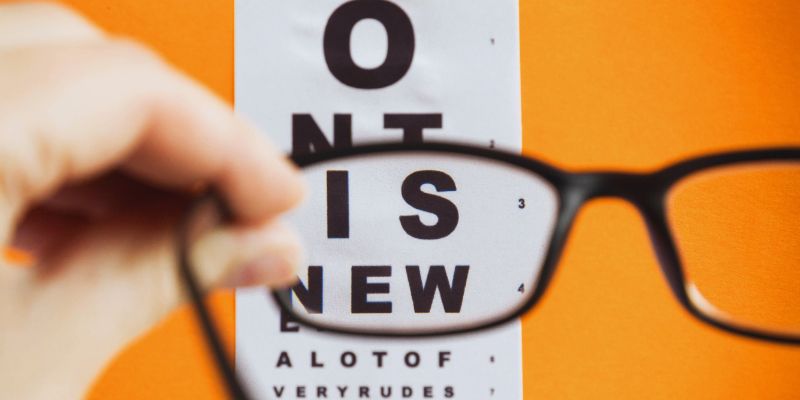Understanding Pleurisy: Symptoms, Diagnosis, Treatment, and More
The disorder known as pleurisy causes inflammation of the thin tissue layers encircling the lungs. Particularly when coughing, sneezing, or deep breathing, this irritation causes acute chest pain. The pain results from rubbing the irritated pleural layers against one another. Infections, lung damage, autoimmune disorders, or diseases, including lung cancer, can all cause pleurisy. Additional complaints include fever, chills, dyspnea, and tiredness.
Doctors diagnose pleurisy using physical exams, X-rays, CT scans, and blood tests. Treatment varies depending on the reason, and antibiotics, painkillers, antiviral medications, or fluid drainages can be called for. Vaccines, infection control, and nicotine intake avoidance are preventive steps that help reduce the risk. See a doctor for early diagnosis and treatment if you have ongoing chest pain to guarantee improved recovery and avoid problems.

What Is Pleurisy?
The disorder known as pleurisy inflames the thin layers of tissue encircling the lungs. This irritation is especially noticeable when coughing, sneezing, or deep breathing, as it causes acute chest pain. The inflammation of the pleural layers rubbing against one another causes the pain; breathing is difficult. Infections, lung traumas, autoimmune illnesses, or ailments like lung cancer and pulmonary embolism can all cause pleurisy. People of any age might be affected; symptoms include coughing, fever, chills, dyspnea, and tiredness. Sometimes, pleural effusion, a fluid buildup between the pleural layers, makes breathing more difficult.
Preventing problems requires early diagnosis. To confirm pleurisy, doctors physically examine and do X-rays, CT scans, ultrasounds, blood tests, and thoracentesis. Treatment hinges on the source. Antibiotics are needed for bacterial illnesses; viral infections frequently clear on their own. Management of symptoms includes painkillers, anti-inflammatory medications, and drainage techniques. Knowing pleurisy helps one better control symptoms and maintain lung health.
Common Symptoms of Pleurisy
Although the symptoms of pleurisy vary in degree, the most often occurring is acute chest pain that worsens with coughing, sneezing, or breathing. Many define it as a stabbing sensation on one side of the chest. Many times, pain during inhaling causes dyspnea. One may also get a dry or mild cough free of mucus. If an infection is the source of pleurisy, fever and chills could follow. Constant discomfort could lead to weakness and tiredness.
Lying on the affected side helps some people since it lessens the movement of the irritated pleura. However, if fluid builds up between the pleural layers, a condition known as pleural effusion, the pain may disappear, and breathing may become more difficult. Extreme fluid accumulation can compress the lungs, making breathing rather difficult. If breathing gets worse, immediate medical assistance is needed since untreated pleurisy can cause major complications, including respiratory trouble and long-term lung issues.
Main Causes of Pleurisy
Pleurisy has multiple causes. A viral infection such as pneumonia or the flu most often occurs.
- Viral infections: Common infections, like the flu and pneumonia, can induce pleurisy by inflating the pleura.
- Bacterial infections: Diseases such as bacterial pneumonia and tuberculosis can enter the pleura and cause infection and inflammation.
- Lung injuries: Pleurisy can be brought on by trauma from surgery, accidents, or medical treatments damaging the pleura.
- Autoimmune diseases: Conditions include lupus, rheumatoid arthritis, and other immune system diseases that can cause chronic pleural inflammation that results in discomfort, coughing, and dyspnea.
- Pulmonary embolism: If untreated, a blood clot in the lungs can impede blood flow and lead to pleurisy, severe chest pain, dyspnea, and perhaps fatal results.
- Certain cancers: Pleural inflammation and fluid buildup may follow from lung cancer, mesothelioma, or malignancies spreading to the lungs.
- Heart conditions: Inflammation from pericarditis or heart failure might aggravate pleurisy symptoms. This inflammation could aggravate coughing, dyspnea, and discomfort; hence, medical examination and suitable therapy are needed.

How Is Pleurisy Diagnosed?
Beginning with a physical examination, doctors diagnose pleurisy using several techniques. Using a stethoscope, the examiner listens to the lungs for a scratchy sound known as a pleural rub, which points to inflammation. Pleurisy can be confirmed using several diagnostic tests. An X-ray of the chest looks for fluid around the lungs or infection. A CT scan offers finely detailed images to find anomalies in lung anatomy. Ultrasound imaging aids in the identification of pleural space fluid buildup.
Blood tests are done to look for autoimmune diseases or infections that may aggravate inflammation. Sometimes, a technique known as thoracentesis, where a needle is used to extract pleural fluid for laboratory testing, is carried out. Early diagnosis lets doctors decide which course of treatment is best. Treating an underlying disease will help to prevent more complications and encourage recovery if pleurisy is brought on by one of them. Early medical attention enhances results.
Treatment Options for Pleurisy
Treatment for pleurisy emphasizes pain relief, depending on its source. In contrast, medicines cure bacterial infections, and painkillers such as ibuprofen aid in lessening discomfort. Though most cases go away independently, antiviral medications may be needed if a virus causes pleurisy. While blood thinners are administered if a blood clot is the source, steroids can reduce inflammation in autoimmune-related pleurisy if fluid builds up in the pleural space. A process known as thoracentesis can be carried out to empty the pleural space, therefore reducing lung pressure.
Additionally important for rehabilitation are lifestyle adjustments. Resting lets the body heal; drinking fluids helps recover from infections. While avoiding nicotine intake stops more lung inflammation, using a humidifier aids with breathing. Severe situations could require extensive treatment, in which case hospitalization is required. Early medical treatment guarantees correct management and reduces problems. Most people fully recover from pleurisy and restore normal lung capacity with the correct therapy.
Conclusion:
Painful lung disorder, also known as pleurisy, results from pleural inflammation. The primary complaint is acute chest discomfort made worse by breathing. Pleurisy may result from diseases, accidents, or infections. Diagnosis calls for imaging and physical examinations. The cause determines the treatment. Management of symptoms includes painkillers, antibiotics, and drainage techniques. Though they can arise, complications like pleural effusion are manageable. Vaccines and good behavior are among the preventive measures that lower risk. See a doctor if you have constant chest pain. Early diagnosis and therapy help to improve recovery. Knowing pleurisy helps one properly control symptoms.












